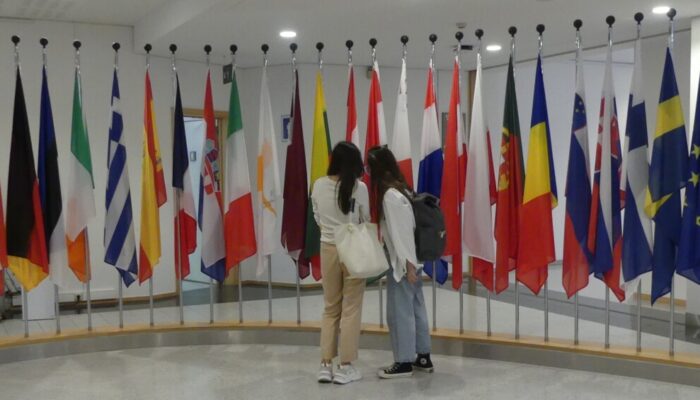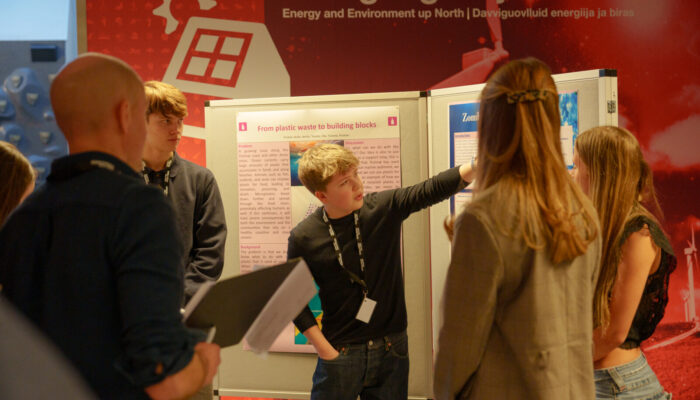Each month we feature specific Divisions of EGU and during the monthly GeoRoundup we put the journals that publish science from those Divisions at the top of the Highlights section. For February, the divisions we are featuring are Geodesy and Geodynamics. They are served by the journal: Solid Earth (SE) and Geoscientific Model Development (GMD). Geoscientific Model Development: Moving beyond post ...[Read More]
GeoLog
GeoPolicy: Science Diplomacy in a new Geopolitical order
We have entered a new era of “harsh” geopolitics. Those were the words of the European Commission President Ursula von der Leyen in her keynote speech at the World Economic Forum in Davos on January 21, 2025. It is an era with geostrategic rivalries where commitment to international organisations (e.g. UN, WHO) and global solidarity can no longer be taken for granted. By now it is clear that the c ...[Read More]
GeoLog
Sparking scientific curiosity in Arctic Students: How they’re tackling big questions
Growing up, I didn’t know what it meant to “do research”. I did some research projects in high school, but research as a field path was totally foreign to me until I started university. Unlike me, the young students who participated in this year’s Arctic Frontiers Science for Schools program were given a first-hand glimpse into what it means to conduct professional research. The Science for School ...[Read More]
GeoLog
How can scientists see ice underground? Recent study reveals how!
When it comes to peering beneath the Earth’s surface, geophysicists have an arsenal of high-tech tools at their disposal. But what happens when you need to track something as elusive as underground ice forming and melting in real time? Enter borehole Ground-Penetrating Radar (GPR), the underground detective that helped Peter Jung and his colleagues image frozen subsurface volumes in an experimenta ...[Read More]
GeoLog
Why Earth and Space Sciences need to dismantle the cis-het-white boys’ club
The Earth and space sciences, like many STEM fields, have long been dominated by a narrow vision of who belongs. But the tide is turning. A 2023 workplace climate survey of Earth and space scientists highlights both the persistent barriers queer and other historically excluded scientists face and the urgent need for cultural shifts within the discipline. The data is clear: the geosciences must now ...[Read More]
GeoLog
How to make a personal change this year: part 2 – growth
It is the new year and new resolutions draw you onward. Yet motivation is fickle, and too often good intentions wither before bearing fruit. You may have drawn a plan to keep you in check, but how do you build on this to achieve sustainable growth? Sustainable growth has been a crucial throughout my career: from projects management and scientific research to building a charity, all required the ab ...[Read More]
GeoLog
Are you ready to vote for your favourite Division blog of 2024?
Our EGU blogging team has had a fantastic 2024 posting across our official blog, GeoLog and the division blogs. Most of our readers appreciate EGU’s blogs for their informative yet accessible style, and for our bloggers ability to take complex geoscience content and make it fun and relevant to the reader. If this sounds like something you’d like to get involved in, we encourage you to get in touch ...[Read More]
GeoLog
GeoRoundup: the highlights of EGU Journals published during January!
Each month we feature specific Divisions of EGU and during the monthly GeoRoundup we put the journals that publish science from those Divisions at the top of the Highlights section. For January, the divisions we are featuring are Tectonics and Structural Geology (TS), Geochemistry, Mineralogy, Petrology & Volcanology (GMPV), and Earth Magnetism & Rock Physics (EMRP). They are served by the ...[Read More]
GeoLog
GeoTalk: Meet Viktor Bruckman, interdisciplinary researcher, EGU Division President, and EGU Biodiversity Task Force
Viktor, welcome to GeoTalk! Can you tell us a bit about your current research focus? My current research is on the defossilization of our energy system with a strong focus on the roles of forests and soils in this context. I was originally trained in forestry and my research is still tightly connected with this topic, but it has widened to also include aspects of carbon sequestration, sustainable ...[Read More]
GeoLog
How to make a personal change this year: part 1 – the approach
Developing a new skill. Building a routine. At the turn of the new year, the resolution to make such changes burns strong in many. Yet good intentions often recede under the draw of familiar habits and with the waning of motivation. It’s a common sight: gyms flourish with new members in January, only for their numbers to thin as the months progress. This fatigue is common not just for exercise, bu ...[Read More]








